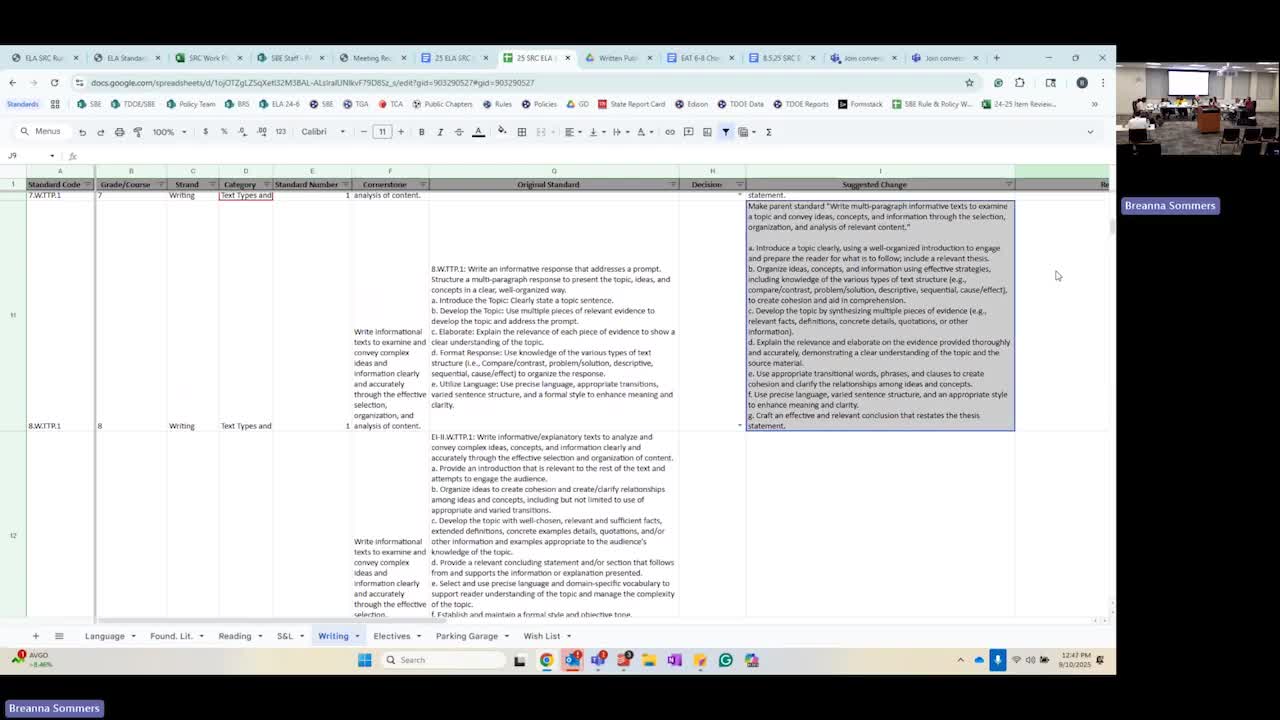Educators Discuss Eighth Grade Reading Standards and Curriculum Rigor Adjustments
September 18, 2025 | State Board of Education, Deparments in Office of the Governor, Organizations, Executive, Tennessee
This article was created by AI summarizing key points discussed. AI makes mistakes, so for full details and context, please refer to the video of the full meeting. Please report any errors so we can fix them. Report an error »

During the recent meeting of the ELA Standards Recommendation Committee, a significant discussion emerged regarding the appropriateness of teaching transitional elements in middle school. Committee members debated whether to expand the current standards to include transitional words, phrases, clauses, and sentences for eighth graders. One member expressed concern about the developmental readiness of students, suggesting that such content might be more suitable for high school students, especially given the high-achieving nature of their group.
The conversation highlighted a gap in the existing curriculum, as certain writing skills, such as compare and contrast and cause and effect, are not introduced until ninth and tenth grades. This raised questions about the feasibility of adding these elements to the eighth-grade standards without overwhelming teachers and students. One member proposed that these skills might be better suited for reading standards, as they often arise naturally in teaching, despite not being formally included.
The committee also grappled with the challenge of balancing rigor with the practical limitations of classroom time. Concerns were voiced about the potential burden of additional standards on teachers, prompting discussions about how to streamline the curriculum. A suggestion was made to focus on major types of text structure rather than an exhaustive list, allowing for a gradual introduction of the concept.
As the committee continues to refine the ELA standards, the implications of these discussions could significantly shape the educational landscape for middle school students in Tennessee. The next steps will involve revisiting these proposals to ensure that the standards are both challenging and developmentally appropriate.
The conversation highlighted a gap in the existing curriculum, as certain writing skills, such as compare and contrast and cause and effect, are not introduced until ninth and tenth grades. This raised questions about the feasibility of adding these elements to the eighth-grade standards without overwhelming teachers and students. One member proposed that these skills might be better suited for reading standards, as they often arise naturally in teaching, despite not being formally included.
The committee also grappled with the challenge of balancing rigor with the practical limitations of classroom time. Concerns were voiced about the potential burden of additional standards on teachers, prompting discussions about how to streamline the curriculum. A suggestion was made to focus on major types of text structure rather than an exhaustive list, allowing for a gradual introduction of the concept.
As the committee continues to refine the ELA standards, the implications of these discussions could significantly shape the educational landscape for middle school students in Tennessee. The next steps will involve revisiting these proposals to ensure that the standards are both challenging and developmentally appropriate.
View full meeting
This article is based on a recent meeting—watch the full video and explore the complete transcript for deeper insights into the discussion.
View full meeting
